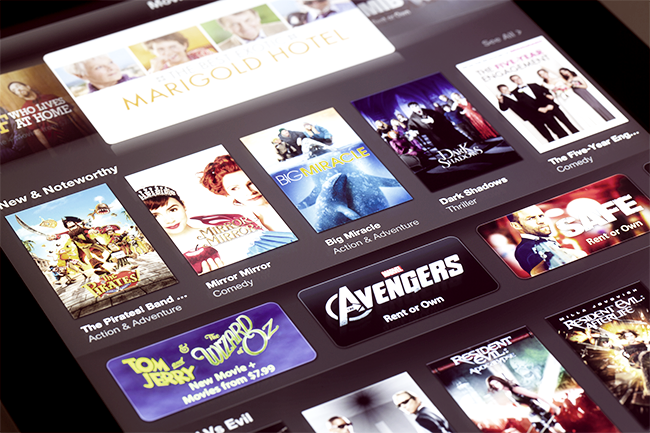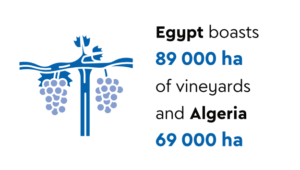Just one more week. This is the thought that any avid TV series watcher has all too often. The wait. The wonder of what’s going to happen next. Will Frank and Claire lure Democratic whip Jackie Sharp back into their conspiratorial lair in House of Cards? Will the Walking Dead’s Alexandria ever find who she so desperately seeks? Will Sheldon and Leonard of the Big Bang Theory eventually manage to publish their physics paper on time? Access to technology and the internet means no longer having to wait an entire week to find out.
This saving grace is called video on demand (VoD). Informally known as internet TV, the service allows subscribed viewers to watch what they want, when they want to, without having to stick to a set TV schedule or sit through commercials.
The way it works is simple. Once you’ve decided on a service (and there are quite a few popping up from around Africa to choose from), subscribe, download the app, select what you want to watch on any electronic device – such as a smartphone, tablet or laptop/desktop PC – and you are ready to binge-watch all your favourite TV shows.
According to various media outlets, while some experts are sceptical about VoD making waves in Africa at present – due to low internet penetration rates as well as unstable networks – PwC estimates revenues from pay-TV subscriptions (which is followed by the implemen-tation of video entertainment services) will reach ZAR40.9 billion in 2019. And that’s just in South Africa.
Here’s an example of how it could work. In 2014, the popular video-sharing website YouTube recorded that more than 300 hours of video was being shared every single minute – up from only 60 hours of video per minute in 2012. That’s a lot of video feed for one site to handle and YouTube manages this by implementing technology that compresses the videos during upload.
Video compression is a way of rearranging a video so that it is suited for the screen of whichever device you are using, as well as network conditions. When you play a video, the technology makes the files smaller so that you experience better viewing quality and it can also help reduce long start times, buffering and stalls on video and audio streams. This kind of technology can potentially be a big game changer in Africa’s over-the-top (OTT) video services market.
One of the companies looking to capture this largely untapped African market is Ericsson. The company, in partnership with telecoms services provider Airtel Nigeria, recently launched its first VoD platform, NuVu, offering Airtel subscribers in the country more than 3 000 local and international TV and movie titles spanning a variety of genres.
NuVu, which was initially launched as an Android app for smartphones, is a low bandwidth product and has a built-in feature to distribute content to consumers during off-peak periods. This content is accessible offline for up to 30 days after downloading, resulting in minimised data costs for both the operator and consumer, says Ericsson, adding that it addresses the cost challenge that has thus far been an obstacle for VoD uptake in Africa.
NuVu MD Niclas Ekdahl says the big challenge is the distribution possibilities. ‘If you look at Western Europe today, everyone has unlimited broadband, high fibre speeds and no data caps. The biggest challenge here is very many people with 3G connections, very little fixed broadband and very expensive data charges.’
Ericsson aims to change this by further investing in content, technology and operation to bring a full end-to-end-managed VoD solution in partnership with telecoms companies to the end consumers.
Meanwhile, when Netflix – one of the largest international names in video streaming services – launched in 130 countries around the world (including all 54 on the African continent) earlier this year, the California-based company was aware that it might hit a few snags while making the service fully accessible to Africans. Therefore, it developed its own video compression technology, which works by caching content on servers worldwide and allows the service to deliver shows, movies and documentaries even over slower connections.
Another VoD company, iROKO TV (a rather big name in Africa, particularly in Nigeria), also recognises the challenges online streaming poses in Africa. ‘With millions more Africans poised to online via mobile in the coming years, our mission is to lead viewers to content they’ll love. This is something the vast majority of the continent struggles with today. We hope to bridge that divide, and this additional investment supports such a plan,’ says Jason Njoku, CEO and co-founder of iROKO.
A project to move iROKO’s platform from being web-based to a mobile-first Android app with download functionality was implemented close to the end of 2015. According to a statement on the company’s website, this change is designed to optimise data consumption, while also aiming to build a new mobile-only subscriber base across francophone Africa.
In South Africa, VoD services appeared more frequently in the last year – from the likes of PCCW Global’s ONTAPtv.com (the first international VoD service available to South Africans), Naspers’ ShowMax and MTN’s FrontRow, which was relaunched as VU.
ONTAPtv.com is yet another VoD service that makes use of technological features to better the African consumer’s user experience. They are able to stream using PCCW Global’s adaptive bit-rate technology or download content using public WiFi hotspots and mobile data. The company is one of the first in South Africa to bring customers the ability to download content onto smartphones and tablets for off-line viewing.
‘It’s a highly cost-effective service as customers can manage their costs by downloading the content they wish to watch via Wi-Fi, or in off-peak periods, and watch off-line later,’ says Lindsay Servian, head of ONTAPtv.com.
‘In developing markets, just as mobile services leapfrogged fixed-line services to bring cost-effective connectivity to the mass of the people, so OTT video entertainment services are positioned to bring low-cost premium content to the mass of the population who seldom have access to affordable pay TV.’
ONTAPtv.com offers content from international studios including Warner Bros and Metro-Goldwyn-Mayer, as well as local content from providers such as the SABC.
Qwilt – a US-based online video delivery and open-video caching solutions company partnered with South African IP networking service integrator three6five to improve OTT streaming video strategies for service providers on the continent. According to Qwilt, the rapid growth of streaming video offerings such as this can create massive bandwidth demands for service providers who must find new ways to rapidly and cost-effectively scale their networks without sacrificing quality of experience.
However, the company also has no doubt that with the right redesign of an operator’s network architecture to better support streaming video and practical steps to deliver technology recommendations, VoD will have no major issues taking off on the continent. ‘It won’t take long before streaming traffic in Africa accounts for 60% or more of a service provider’s downstream network traffic at peak – as we see now in Europe and the US,’ says Dave Matthews, vice-president of EMEA for Qwilt.
‘With open caching, operators can offload 50% or more of streaming video traffic to a local cache on the network, reducing the cost of transit bandwidth and the cost of internal network capacity required to keep up with streaming demand,’ he says.
















